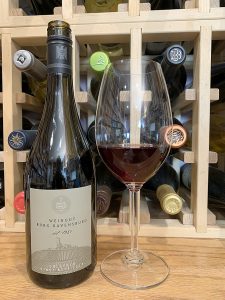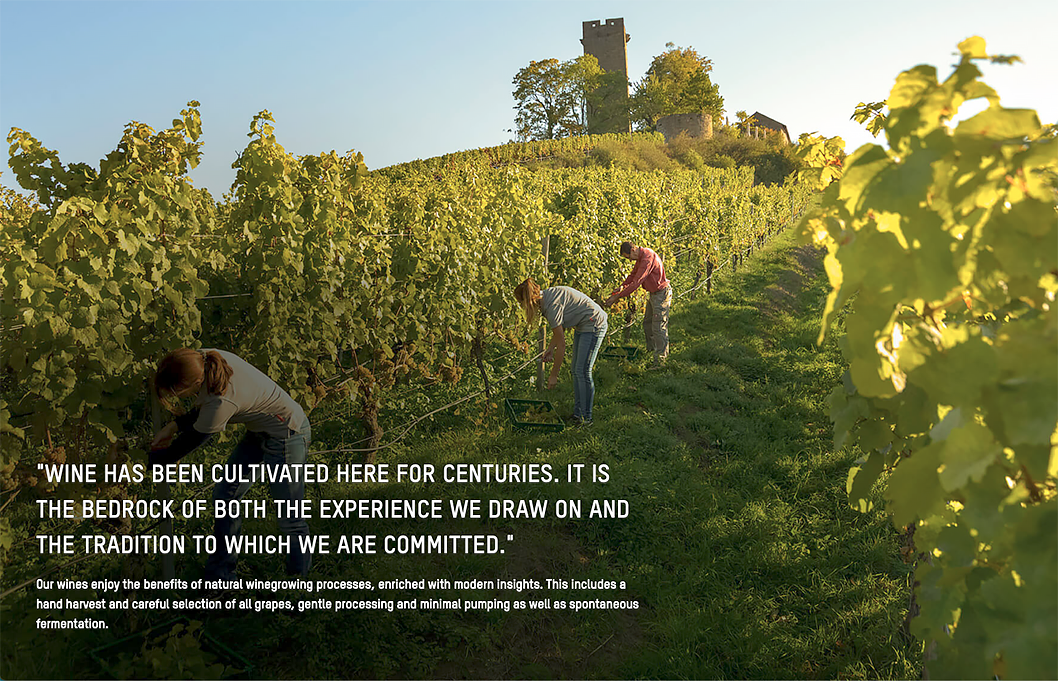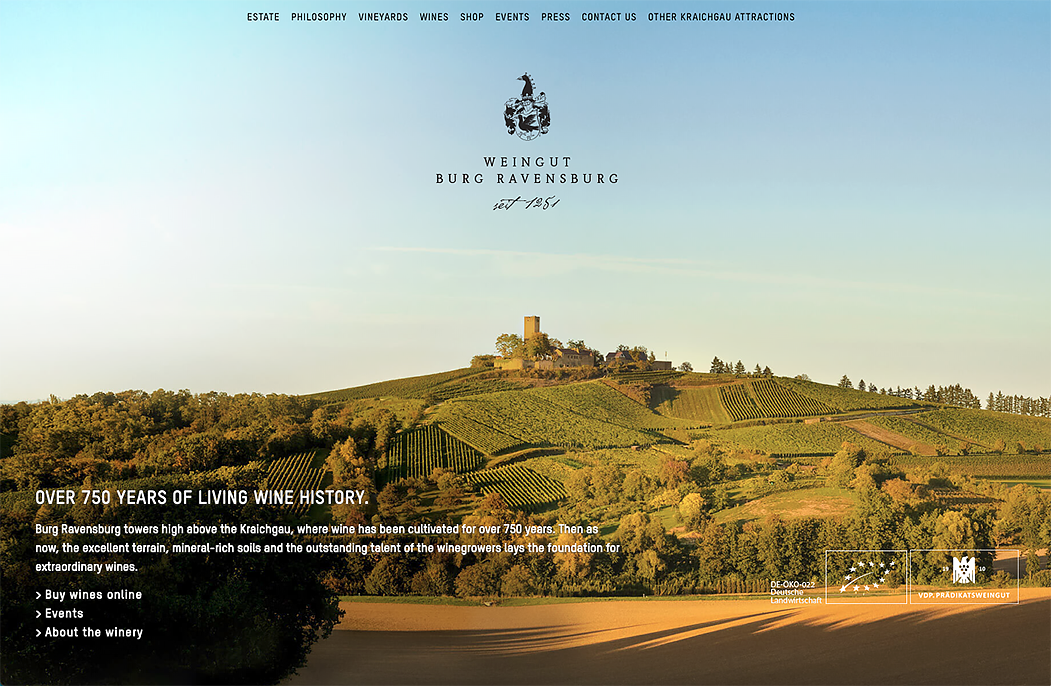Pale ruby color; cherry, cranberry, raspberry, plum, blackcurrant, strawberry, earth, minerality on the nose and palate.

Dry; relaxed tannins and medium acidity. Medium body. Significant blackcurrant, dark fruit tang on the mid-palate. Persistent finish. This is somewhat austere pinot noir, which has its Germanic charms, but do not expect the etherial, diaphanous caresses of a Burgundy or Willamette Valley pinot. Benefits from air time in glass, consider decanting.
The Burg-Ravensburg vines are planted in mineral-rich, warm gypsum Keuper soil. The grapes are hand-harvested and sorted, then whole-berry fermented in small vats, which emphasizes the skins, stems, and pips and gives this pour its assertive, distinctive character. Malolactic fermentation occurs in used barriques, then the wine matures in the same barriques for 8-12 months, imparting only a suggestion of oak. 12.5% ABV

Burg Ravenburg towers over the Kraichgau, a hilly region in Baden-Württemberg in southwestern Germany. Grapes have been cultivated there for at least 750 years, the winery claims it was established in 1251. The mineral-rich soils give wines from the region a distinctive minerality. Many are surprised by a German pinot noir, but Baden-Württemberg (Stuttgart is the major city) is roughly on the same latitude as Burgundy and the elevations favor cooler-climate vines, so there is no reason pinot noir cannot do well, as this bottle attests.

Weingut Burg Ravensburg Sulzfeld Pinot Noir Trocken, Baden 2017 offers parade of red fruits and some earthy tones. Organically-grown grapes from vineyards cultivated since the 1200s (yes, for more than 700 years). While some associate Germany with riesling, the same cool climate and soil work for pinot noir. This is an example. Excellent QPR (quality-price ratio). Pair with rich fish—salmon; lighter beef dishes; veal stew; poultry—turkey, duck, baked chicken. Cheese—sheep’s milk cheeses; gruyère, comté, emmenthal, gouda, taleggio. $17-21
